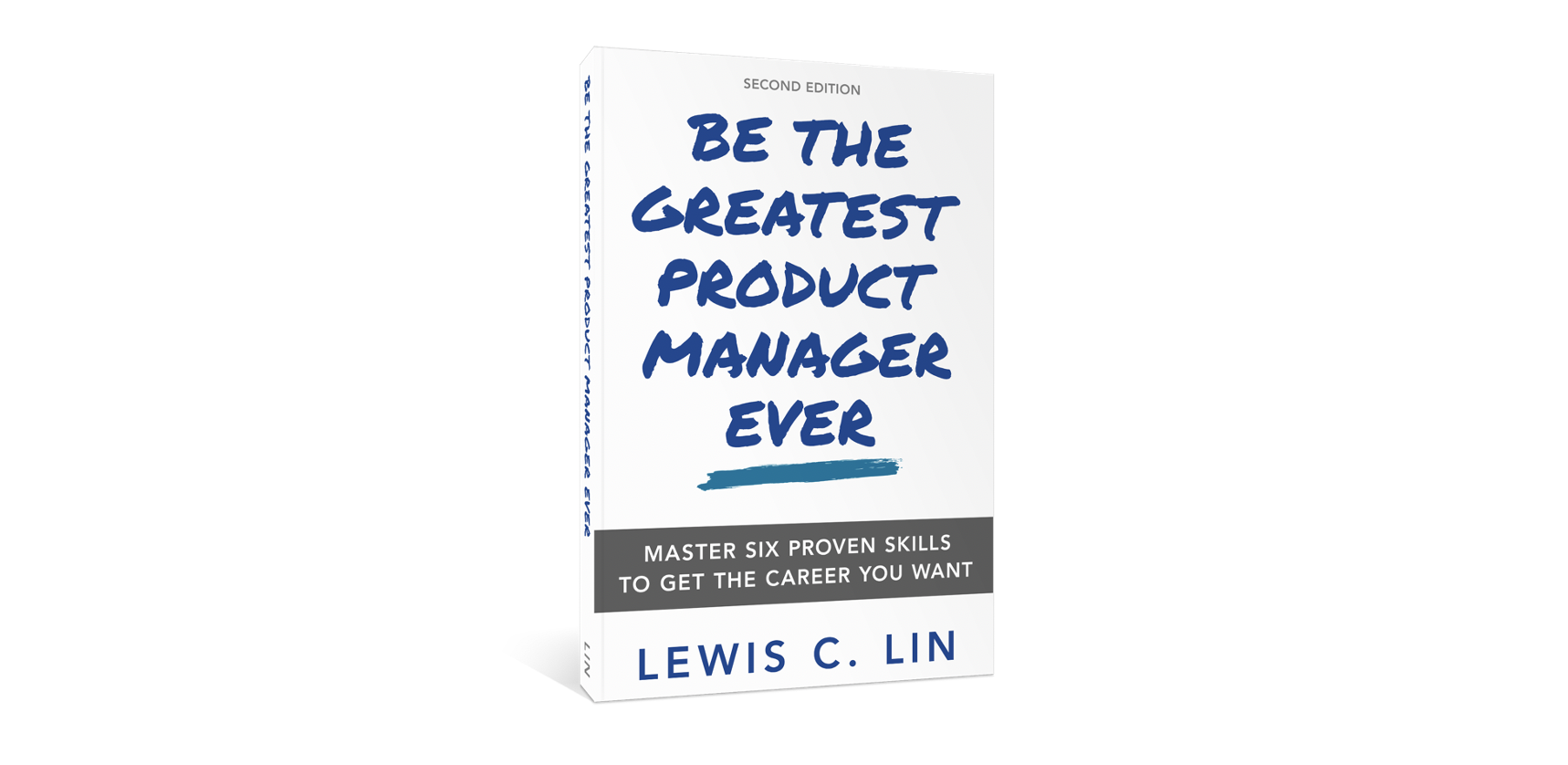We are thrilled to have a guest post from Pradnya Bhawalkar. Pradnya is a technology CEO who runs her own software consultancy Persevera Systems. Pradnya holds two degrees from Rice University, an MBA from the Jesse H. Jones Graduate School of Business and a B.S. in Chemical and Biomolecular Engineering.
A Playbook for Navigating a PM Career
Learn from the mistakes of others. You can’t live long enough to make them all yourself. ~Eleanor Roosevelt
Wherever you are on your career path, Be The Greatest Product Manager Ever provides a clear overview to help you navigate the path from beginning product manager to legendary CEO.
Packed full of frameworks and life advice, this guide is not just for navigating the interview or the job, but the career and pulls from Lewis’ real-world experience. Below I provided a book summary, with the key takeaways from each chapter.
Navigate the journey from product manager to CEO by embracing growth.
Your titles and responsibilities change as you traverse five distinct levels in the PM career path.
Product Manager. No complex projects, low visibility
Group Product Manager. Managing direct reports, reputation as a skilled communicator
Director of Product Manager. More gravitas. You anticipate problems others miss.
VP of Product Management. You have mental toughness, the ability to build teams, or both.
CEO. You’re the boss until you realize you’re not. You provide moonshot visions that create a revolutionary, new business.
The ESTEEM™ framework highlights key skills that will serve as your guide.
Here are the six steps of the ESTEEM method:
Execution. Deliver results consistently.
Superior communication skills. Be able to tell captivating stories.
Tactical awareness. Develop a “sixth sense.” Learn how to work smarter.
Extraordinary mental toughness. The ability to lead groundbreaking change and to be ready to try the 1000th time, after failing 999 times.
Exceptional team builder. Have an extensive network and love to teach others to do their jobs well.
Moonshot vision. Propose unique, audacious, extraordinary visions, match that to a large, profitable need, and highlight the specific steps to build it now.
Skill 1: Execution
You have to be able to get things done.
Start every new job by pausing your ambition (and judgment) for 90 days. Observe, instead of judging. Stay in the present.
Figure out what to do by not overthinking. Ask your boss what you need to work on.
Practice more system 2 (thoughtful) thinking. Increase awareness, evaluate, and resist urgency. Write write write. Do system 1 (reactive) tasks later in the day.
Don’t confuse being busy with initiative. Be more likable through proactive updates. “Do and update.”
Provide visibility. Your boss won’t know until you’ve told them. Always over-communicate rather than not communicating at all.
Don’t multitask.
Follow the chain of command. Don’t go around your boss. They value loyalty.
Skill 2: Superior Communication Skills
The best communicators use frameworks to share, captivate, and influence effectively.
Situation-Complication-Resolution (SCR).
Situation. Share an unbiased view of current conditions.
Complication. The twist. What makes the listener think more?
Resolution. Propose a solution.
Steve Jobs’ favorite frameworks.
Use zippy words like dreamy, revolutionary, unbeatable.
Rule of Three. Bundles responses in threes. “We have three major product families: the iPad, the iPhone, and the Mac”.
Repeat yourself.
Be Authoritative like a Professor. Use a whiteboard as often as you can.
Tell Good Stories. Remember the 5 Ws and H — who, when, where, why, how. Follow the Hero’s Journey (hero and villain, characters, dilemma, plot, setting).
Skill 3: Tactical Awareness
Build awareness to boost performance.
Tactical awareness. Small differences explain peak performance. When most people zig, you zag.
Individual awareness. Don’t just focus, obsess. Search for personal weaknesses by asking everyone around you — what triggers an emotional reaction? Address your cognitive biases.
Emotional awareness. Stop ruminating about the past and worrying about the future.
Interpersonal awareness. Improve your relationships with effective teamwork. Ask “do I communicate in a clear, open, assertive, and straightforward way?”
Skill 4: Extraordinary Mental Toughness
Persevere over trying moments to be exceptional. How:
Be the last to quit. Many individuals win simply because they’re the only ones left.
Disagree and then commit. Seek out as many dissenting opinions as possible.
Tolerate stress. Prepare prepare prepare.
Watch for errors of omission. Figure out what is left out.
Apologize sincerely.
Play or survive in politics.
Affirm yourself.
Skill 5: Exceptional Team Builder
Build strong, effective teams quickly.
Hiring. Always ask: Tell me a time when you handled criticism. Conduct structured interviews. Always check references.
Onboarding. Your new team members will struggle. Expect to move people through the ODRP model: Onboarding, dissatisfaction, resolution, production. “Hire for attitude. Train for skill.”
Managing. Praise groups in public, but individuals in private. Delegate the right tasks and use recipes. Meetings should be the exception, not the rule.
Promoting. Promote the internal candidate that’s 60% ready. No hotshot can get things done on his or her own.
Firing. Don’t give up too early. Don’t wait too long.
Skill 6: Moonshot Vision
A moonshot is an ambitious, groundbreaking vision, such as SpaceX’s enable human life on Mars. How to get there:
Delight the customer. Clarify the goal. Figure what customers want before they do.
Inspiration comes first. Collect good ideas. Be curious anytime, anywhere. Copy thinking, not product. Brainstorm at least 10 solutions.
Watch your resources. Integrate your efforts across your company. Get into the technical details. Prioritize 40% innovations first.
